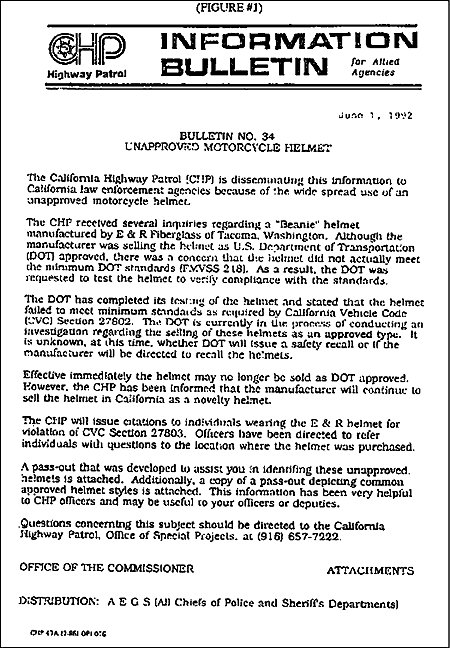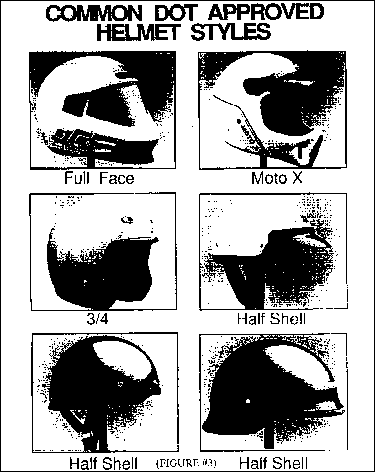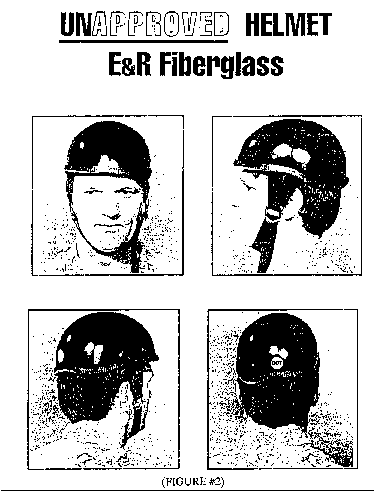
by Tony Sanfelipo, National Director, B.O.L.T.
Every day we hear or read about certain classes of people being denied their rights by governmental agencies, private businesses or overzealous police enforcement. These classes which capture so much media attention include minorities, low income or welfare recipients, the homeless, etc., in conjunction with an increasing number of complaints about women being denied rights, gay activists ever seeking more acceptance in the mainstream of society, and a myriad of other groups clamoring for their voices to be heard.
Injustice in this country is nothing new. All you have to do is study some history to see how it is developed and nurtured. Yes, it is an art form practiced to perfection by bigots and power hungry politicians and bureaucrats. Actually, it's quite easy to persuade the general public into accepting oppressive actions directed at certain classes. All that needs to be done is to put the target class into a category, such as known criminals, unacceptable behavior patterns, uneducated, and there is an immediate willingness to look the other way when these classes are denied protection under the Fourteenth Amendment.
In the 1970's, motorcyclists rising up in revolt over the onslaught of federal protectionism under, the guise of the infamous Safety Act of 1966, proclaimed themselves the "new minority". And the ability to organize and resist the encroachment on their liberties certainly aroused and alerted the government that there was a new force to be reckoned with. Of course motorcyclists were already in the minds of most citizens, thanks primarily to Hollywoods depiction of what bikers were all about. The Booze Fighters romp in Hollister, which prompted the filming of "The Wild One," forever implanted an image of us in the minds of the unknowing public. in celebration of the mystique the movie created, outlaw motorcycle clubs, rebellious toward society already, relished in playing to the fears and suspicions of the average enslaved urban dweller, trapped in a lifestyle predictable from day to day, mundane in it's existence and daily routine.
Motorcyclists offered a look at what a true free spirit was all about, albeit the look was usually from some great distance for reasons of self preservation, and the renegade lifestyle of taking each day as it came without the drudgery of conforming to rules was enviable and at the same time foreboding to those who succumbed to the ritual brainwashing and manipulation going on in the media at that time.
The media is probably more responsible for how we look and act than the movie about Hollister. The 1960s were filled with news accounts of outlaw bike clubs engaged in bizarre behavior, raunchy exhibitionism and criminal activity. Some of these events were, oddly enough, staged and paid for by the media, always looking for the shocking true story to sell a paper.
They soon reaped monetary reward for allowing their story to be told, although with the usual media perversion on the truth. Movie offers were even being negotiated. When the 1970s rolled around, and motorcyclists began taking a stand on constitutional rights and guarantees, the public knew us inside and out. At least they thought they did, thanks to all the publicity. But the image which was cast was not entirely without a positive side. The fear and uncertainty which most people had of us was used to an advantage by early bikers' rights activists.
After all, if your enemy fears you, he won't charge into battle thinking he will dominate you completely. We owe a lot of our early success to the fact that legislators did not know how to handle us in assembly chambers and senate hearing rooms. It's one thing to see leather clad barbarians astride chrome and steel engines of fury racing down a freeway in Santa Monica, and quite another to be sitting across the table from one, expressing his distaste for a law you have forced down his throat.
This was the setting in the early 1970s when activists set out to reclaim our freedoms. The prejudice formulated by the media was accepted with a fervor by many police authorities. Their disdain for bikers was exhibited in an expressed hatred of any unfortunate rider who suddenly found himself at odds with an officer, be it an actual transgression of some law, or the predisposed notion in the officer's mind that some offense had been committed.
Ever since the Saturday Evening Post chose to implant a vision of bikers in the minds of it's readers, and Life followed suit in the company of the New York Times, Los Angeles Times and San Francisco Chronicle, thousands of motorcyclists have been killed at the hands of the authorities, with no outcry for justice from the community leaders as we see so often today. To better understand what motivates police officers to brutalize what they conceive as "undesireable", we must consider that the police are for the most part, incapable of solving crimes.
Excluding eyewitness identification, of the perpetrator being caught in the act, or leaving behind incriminating evidence such as finger prints, positive ID in the form of a lost wallet, or hand writing sample, most crimes are beyond the capabilities of the police. This frustration of not being able to do the job they were sworn to do leads to a feeling of impotence for many of the "boys in blue."
Imagine being a law enforcement officer empowered with the ability to force your will on others, complimented by a shiny new badge, starched and pressed uniform, and an automatic side arm smartly dangling from it's holster. Your job is to bring down career criminals and mafioso types, but can't find them, even when your buddies can tell you who they are, or you can find them listed in most popular magazines of the day. You can go to just about any flea market and be sure that half the stuff there is hot, but you can't prove it. You get lucky on occasion, but the judge cuts your arrested loose before the ink on the booking sheet is dry. This is the same judge who sentences hookers by day, and visits them by night.
No wonder you're frustrated. Everybody is getting away with something, and you can't do anything about it. Of course, the real crooks are careful not to rub it in your face, they just keep doing what they always do. Then along comes some other players who don't go by the same set of game rules. They being the free spirits they are do not hesitate in reminding you, verbally, or just by their actions, that your existence is a joke. Now you can do something to protect society. You've read all the bulletins, and U.S. Marshall's reports about outlaw bikers. You've been taught to know that these people are dangerous, carry weapons and are usually under the influence of drugs. You take no chances. The cap pistol you wielded when you were six, and chasing Indians with the posse, has been replaced with a real gun. Now you can bring those outlaw elements to their knees, comfortable in the knowledge that society forgives your inability to solve crimes, and your brutality.
The above only touches on the problem of instilled bigotry most enforcement officers receive. There is a trickle down effect in place also, whereby agencies like NHTSA view motorcyclists with disdain, and the belief we are unable to make educated safety decisions by ourselves. Emergency room doctors often regard us as potential organ donors, rather than injured human beings. Most business establishments would prefer we didn't use their facilities.
To determine exactly where all this prejudice came from would be impossible, but suffice it to say it has been intact for a long, long time. And it continues to flourish because of acceptance and continued bias put forward by those who hate our lifestyle, or view it as a threat to their dominance.
We ourselves foster some of the same bigotry toward one another when you consider that many of us eagerly proclaim that patch holders and 1%ers cause irreparable harm to our image. We tend to forget they are part of us, or more correctly, we are a part of them. We owe much of our existence, the way we look and dress, or our styling, to club members. And much of our early success in the legislative arena was due to their activism and support. Yet we tend to look the other way and deny they are representative of motorcyclists. Ironic, when you consider we try and duplicate their culture, their dress, their attitudes. How many of us enjoy, from time to time, the fact that most of society is afraid of us and is willing to give us our ground, rather than challenge us? Not because of anything we did, but because certain clubs established in the minds of the ordinary citizen that motorcyclists were not a forgiving breed of wimps. We tend to live off that glory even though we continually proclaim we are different from those who came before us.
Until we stop buying into the bias and hype being sold to the public, we will never end the bigotry and violence against motorcyclists by enforcement agencies. We are of one family, some good, some bad. But we can not and should not make a distinction of class among us. Just as there are good and evil among the different races, the distinction ends there. If you're black, you're black. If Hispanic, your're Hispanic. Motorcyclist, Motorcyclist.
If we attempt to separate ourselves into classes and turn our backs to injustice, we then become a part of the problem. Bigotry against motorcyclists must end. And it can only happen if, first, we acknowledge it is happening, and second, unite ourselves against it.
CHP BULLETIN #34, the law that is not law.
CHP Information Bulletin #34 is the boat that won't float. There are too many holes in it . . . gaping holes. The first and most obvious hole is:
CHP Bulletin #34 is not Law!
On June 2, 1992, Deputy Commissioner Dwight "Spike" Helmick, of the California Highway Patrol, initiated a news release to any media source that would listen stating that he had ruled that E&R Helmets were no longer "DOT approved", and that anyone "caught" wearing one would be stopped and cited by the California Highway Patrol.
Helmick followed up this news release with an All Agencies Bulletin -- the now famous (or infamous) CHP Bulletin #34 -- designed to inform all police agencies, and the courts, that the E&R Helmet did not comply with the Federal Standard, and therefore anyone wearing one was doing so in violation of the helmet law. The CHP subsequently pronounced these helmets "unapproved" "bogus" or "illegal" and began a state-wide campaign of citing wearers of such helmets.
However, all of this happened without any legal foundation. The California Highway Patrol has, in fact, been given the authority by the California Legislature to "adopt reasonable regulations" for helmets "sold" or "offered for sale" in California; but nothing along the lines of authority to modify the helmet law to prohibit the use of helmets which they deem "unapproved."
So, the first hole they had to patch is the fact that they did not have any jurisdiction to rule on this matter, much less begin this campaign of enforcement.
What the California Highway Patrol has done is to attempt to make law, by arbitrary edict, and shove it down the throats of California motorcyclists -- primarily Harley Davidson riders -- and in so doing have violated the Separation of Powers protections of both State and Federal Constitutions.
The Legislative Branch of government makes law; not the Executive, of which the California Highway Patrol is a part.
The fact that CHP Bulletin #34 has been treated as law by not just the CHP, but, as anticipated when they issued the bulletin, most of the other police agencies in the state, and far too many of the courts, does not make it law. There simply is no statutory language to support an allegation of violation of the helmet law by "wearing an unapproved helmet". Period.
CHP Bulletin #34 was not, is not, and cannot be Law. At least not until such time as the California Legislature puts their stamp on it (which they never will, but that's another story).
CHP Bulletin #34 is not accurate!

Directing your attention to figure #1: the phrase "DOT approved" is used twice and "unapproved" also twice. There are also two references to "approved" styles and types of helmets.
The inaccuracy begins with the fact that DOT (The United States Department of Transportation) does not "approve" anything . . . as is no-thing.

The National Highway Traffic Safety Administration (NHTSA) has carefully, repeatedly, made that point clear in communication after communication with the California Highway Patrol, that neither they, nor any other Federal agency, "approve" anything.
Accordingly, what about the reference to "DOT Approved Helmet Styles" in figure #2? A style of helmet is DOT approved? I don't think so, and the NHTSA says not, so what's with figure #2? More of that just makin' it up as we go stuff from the CHP? . . . Right!.
Then, there is figure #3. The DOT does not "unapprove" anything either, so what does the CHP mean by "unapproved helmet"? By who, and with what authority, is a helmet "unapproved". Who says this, or any other helmet, is "unapproved'? Call NHTSA for yourself, they will tell you that they do not "approve" helmets, or anything else. Nor do they "unapprove" anything. Not helmets, and not anything else. So, who unapproved this helmet?
It is clear that the CHP has acted to deceive, or are pitifully uninformed. They had no valid information to support this bulletin, just a whim . . . and an attitude.
CHP Bulletin #34 is discriminatory!
The fact is that the beanie style helmet has fallen under attack by the California Highway Patrol with no good reason. Over 30,000 citations have been written in response to Bulletin #34. 30,000 citations have been issued for violating a CHP Bulletin over the alleged failure of less than 10,000 helmets. 30,000 citations issued to consumers, in the name of "safety", in the absence of a single "unapproved" "illegal" or "bogus" helmet related injury or death.
On the other hand, over 5,000,000 (yes, five million!) cars have had reported seatbelt test failures from NHTSA, and scores of people die every month in the State of California from faulty seatbelts. Yet, as of today, not one Information Bulletin has been issued in this regard. And, it is a sure bet that if such a bulletin were issued concerning seatbelts, there is no way that the Deputy Commissioner would even suggest citing the driver for wearing an "unapproved" seatbelt.
The only seeming motivation for this whole mess is founded in the fact that the California Highway Patrol is bigoted against "bikers". Little wonder when you consider the amount and types of information they receive on the subject; but, that is no excuse.
All the evidence points to the fact that the ban on the beanie style helmets -- for lack of evidence to the contrary -- rests in the bigoted attitudes and practices of the California Highway Patrol toward Harley Davidson riders -- a.k.a. "bikers."
There are a myriad of other holes (of a more quasi-technical nature) which, in and of themselves, should ultimately sink this boat; yet, as of the date of this writing, there has been not even a hint of a retraction from the CHP with regard to Bulletin #34. Why?
There has been no outcry by the Legislature. Why?
There has been no condemnation by the courts. Why?
The law that is not Law, CHP Bulletin #34, is still on the books, and the willing enforcers of this non-law are, seemingly, everywhere. Why?
Epilog: I recently put these questions to United States Senator Ben Campbell at a get-together in San Francisco. His response was, "The problem is, youre getting 'fair' all mixed up with 'political reality'." Oh? Quig